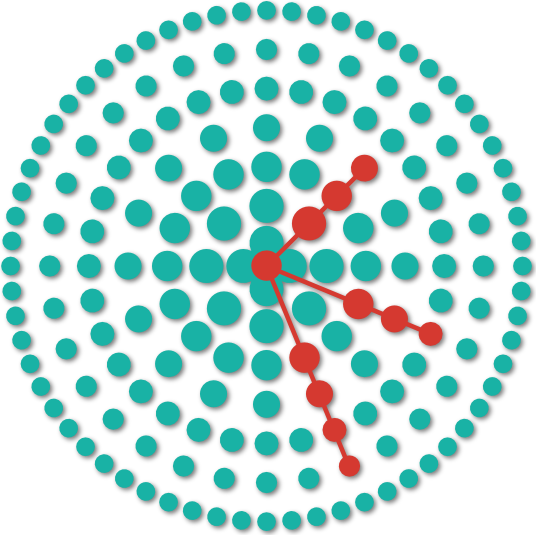Radiation Therapy for Spinal Cord Tumors


A tumor is an abnormal mass of cells that typically occurs as a result of mutations that promote uncontrolled cell division. Although a tumor can develop anywhere in the body, those affecting the spinal cord can present with unique challenges and complications.
The spinal cord is approximately 1 cm in its widest diameter and carries millions of neurons that communicate information between the brain and the rest of your body. Thus, a tumor that compresses or injures this critical structure can cause serious neurologic problems.
Fortunately, treatment options are available for spinal cord tumors. Radiation therapy is an option that can be used in combination with other treatment modalities such as surgery. Understanding the unique advantages of radiation therapy and when it might be considered is important for making informed decisions regarding management of your condition.
Overview of Spinal Cord Tumors
Spinal cord tumors are rare growths that can affect the spinal cord itself or its neighboring structures. They can be classified according to their site of origin, their nature, and their location.
Site of Origin
- Primary tumors: originate from the spinal cord or its nearby structures; These types of tumors are rare.
- Secondary tumors: originate from a tumor that has spread (metastasized) from a different location (lung, breast, prostate, kidney, and colon cancers are among the most common types of cancer that can metastasize to the spine); These types of tumors are more common than primary spinal tumors.
Why should you have your surgery with Dr. Cohen?
Dr. Cohen
- 7,500+ specialized surgeries performed by your chosen surgeon
- More personalized care
- Extensive experience = higher success rate and quicker recovery times
Major Health Centers
- No control over choosing the surgeon caring for you
- One-size-fits-all care
- Less specialization
For more reasons, please click here.
Tumor Nature
- Benign: noncancerous and typically does not spread to other parts of the body; complete tumor removal can be curative
- Malignant: cancerous and aggressive, with rapid growth rates and ability to spread to distant sites; metastatic cancers are malignant, and complete tumor removal in one location will not be curative, because the tumor has already spread to multiple locations in the body
Location
- Intramedullary tumors (10%): grow within the spinal cord tissue itself (examples include ependymoma, astrocytoma, hemangioblastoma, and lipoma); intramedullary tumors can be more challenging to treat because of their proximity to the spinal cord, but treatment options for them are similar to those for spinal cord tumors in general and include surgery, radiation therapy, and, rarely, chemotherapy
- Intradural-extramedullary tumors (30%): grow within the protective membrane of the spinal cord (dura) but outside of the spinal cord itself (examples include meningioma, schwannoma, and neurofibroma); these tumors can form on nerves that branch out from the spinal cord
- Extradural tumors (60%): grow outside of the dura, within the vertebrae, or in the tissues in between them; metastases are the most common type of extradural tumors (lung, breast, and prostate cancers frequently metastasize to the spine)

Figure 1: Magnetic resonance images show a cervical intramedullary tumor in the neck area with a small area of bleeding at its lower pole (red arrow, right image).
Treatment for Spinal Cord Tumors
After being told that you have a spinal cord tumor, you are faced with the task of exploring and evaluating different treatment options. The ideal treatment for your spinal cord tumor is one that aligns with your personal goals and priorities. What constitutes the "best" treatment can vary from person to person.
For some patients, the primary objective is to prolong life and achieve tumor control. In such cases, an aggressive treatment modality such as surgery, radiation therapy, or chemotherapy might be recommended to target and eliminate the tumor.
For other patients, the focus could be on maximizing quality of life and managing symptoms. In such situations, treatments aimed at alleviating pain, reducing tumor size, and improving neurologic function might be prioritized. The plan could involve a combination of therapies, including radiation therapy, medication, physical therapy, and supportive care measures.
Ultimately, the decision regarding the best treatment approach should be made through open and honest discussions with your health care team. They will take into account your specific diagnosis, overall health, individual goals, and preferences to develop a personalized treatment plan that aligns with your needs.
The following are some examples of spinal cord tumor treatments that can be pursued depending on the individual scenario.
- If the tumor is benign and not causing significant symptoms, one approach is to closely monitor the tumor without immediate intervention. During this time, your doctor may prescribe medication(s) or recommend physical therapy to manage any associated symptoms. Regular monitoring ensures that the tumor does not grow to a point at which it poses a threat to your well-being or quality of life.
- If the tumor is associated with significant symptoms, surgery can be performed to promptly decompress the spinal cord and remove the tumor. The goal of spinal tumor surgery is to safely remove as much of the tumor as possible.
- If surgery is not feasible or if surgery did not completely remove a high-grade tumor, radiation therapy offers a minimally invasive alternative or adjunct to surgical treatment. This approach uses high-energy beams of radiation to target the tumor and prevent tumor growth.
Radiation Therapy as a Treatment Option
Radiation therapy has several uses in treating spinal cord tumors. It can be used after surgery, especially if pieces of tumor were left behind to protect the integrity of surrounding nerve fibers and preserve neurologic function. The aim of administering radiation therapy after surgery is to prevent growth of these remaining tumor fragments.
Radiation therapy can also serve as a primary treatment modality for cases in which surgery carries significant risks or is not feasible. Although radiation is effective in destroying cancer cells, it can also damage healthy surrounding tissues. Advances in radiation therapy technologies have improved targeted delivery that minimizes radiation outside of the target boundaries.
Radiation therapy can be delivered from a source located outside of the body (external beam radiation therapy) or from a radioactive source implanted within the body (internal radiation therapy). External beam radiation therapy can be delivered in various ways.
- Three-dimensional conformal radiation therapy (3D-CRT): shapes the radiation beam in 3D space; the radiation beam can tightly conform to the boundaries of the tumor and avoid healthy tissues
- Intensity-modulated radiation therapy (IMRT): builds on the principles of 3D-CRT and enables the radiation oncology team to adjust the intensity of the radiation beam at different parts of the target location, allowing for precise delivery of higher radiation doses to denser areas within the tumor
- Volumetric modulated arc therapy (VMAT): uses a rotating framework to deliver radiation in an arc around the patient; as the machine rotates, it can simultaneously adjust the intensity and shape of the radiation beam to conform to the shape of the tumor
- Stereotactic radiosurgery (SRS): delivers highly focused beams of radiation from multiple angles to converge precisely on to the tumor; it is typically performed in one or several sessions
Radiation therapy can be used several weeks after surgery to allow you to heal and undergo physical rehabilitation if needed. Imaging tests, such as magnetic resonance imaging, can be performed to plan the treatment.
Adverse Effects of Radiation Therapy
Radiation therapy for a spinal cord tumor can lead to short-term and long-term adverse effects that can vary depending on the radiation dose, treatment duration, location of the tumor, and overall health of the patient. The following are potential adverse effects associated with radiation therapy for spinal cord tumors.
- Nausea
- Vomiting
- Fatigue
- Skin irritation, swelling, or blistering
- Difficulty swallowing (cervical spine treatments)
These short-term adverse effects are often temporary and resolve after treatment. In extremely rare cases, radiation therapy for a spinal cord tumor can lead to long-term complications, such as radiation myelopathy (damage to the spinal cord) or contribute to the development of a new tumor(s) in that area.
It is important to maintain open communication with your doctors and inform them about any concerns or changes you experience during or after radiation therapy. They can provide guidance on symptom-management techniques, prescribe medications, suggest dietary adjustments, and recommend supportive care strategies to alleviate discomfort and maximize your well-being during treatment.
Key Takeaways
- Radiation therapy is a treatment modality used for spinal cord tumors to destroy cancer cells, prevent tumor growth, and improve symptoms
- Various radiation techniques, such as 3D-CRT, IMRT, and SRS, can be used; these techniques help deliver radiation precisely to the tumor while minimizing exposure to healthy surrounding tissues
- Radiation therapy can cause temporary adverse effects that can vary from person to person, including nausea and vomiting, fatigue, and skin changes












